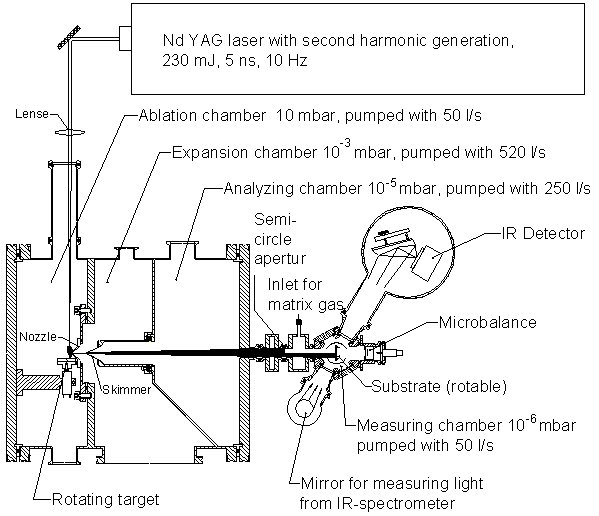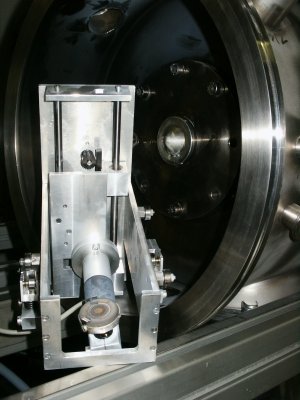Nanoparticle Condensation Experiment
Most cosmic dust particles are formed by condensation from the gas phase. Depending on the conditions, the structural properties of the condensed particles may be quite special, often favoring amorphous networks over crystalline lattices, with possible inhomogeneities, mantles, and agglomeration. Many of these structures may be impossible to be formed by other processes.
Condensation experiments are therefore important to learn more about the properties of cosmic dust. We use a laser ablation source with a pulsed Nd:YAG laser for vaporization of various compounds. The vapor then is cooled by a low-pressure (1-50mbar) gas environment, which may be enriched with reactant gas molecules. This leads to re-condensation into particles of typically 5-50nm size.
A specialty of our setup is, that the condensed particles are extracted from the condensation zone into a free jet in vacuum, from which we can deposit them onto substrates for analysis, part of which (e.g. FTIR spectroscopy) can be performed in-situ, i.e. without exposing the condensate to air.
Currently, we apply this technique to the production of hydrogenated amorphous carbon (HAC) and amorphous silicate particles.
| Publications: |
|
 |
 |
| Sketch of the Nanoparticle Condensation Experiment |
Photo of the rotatable laser ablation target. The nozzle for particle extraction is seen in the background. |
